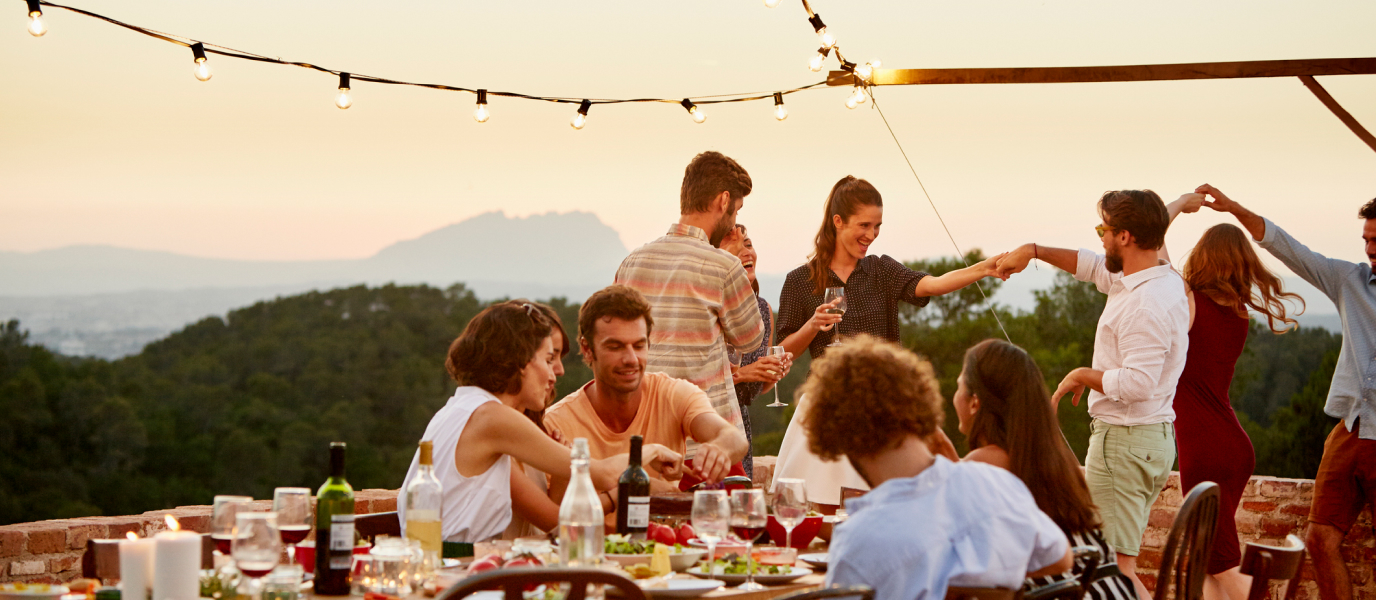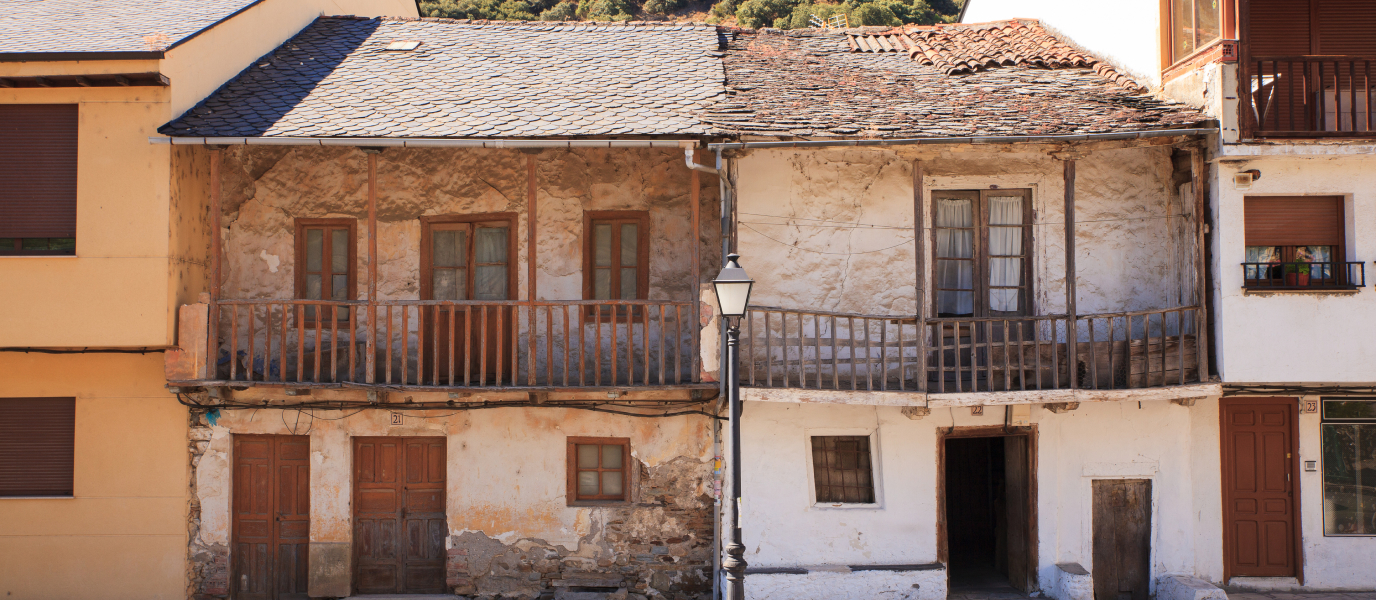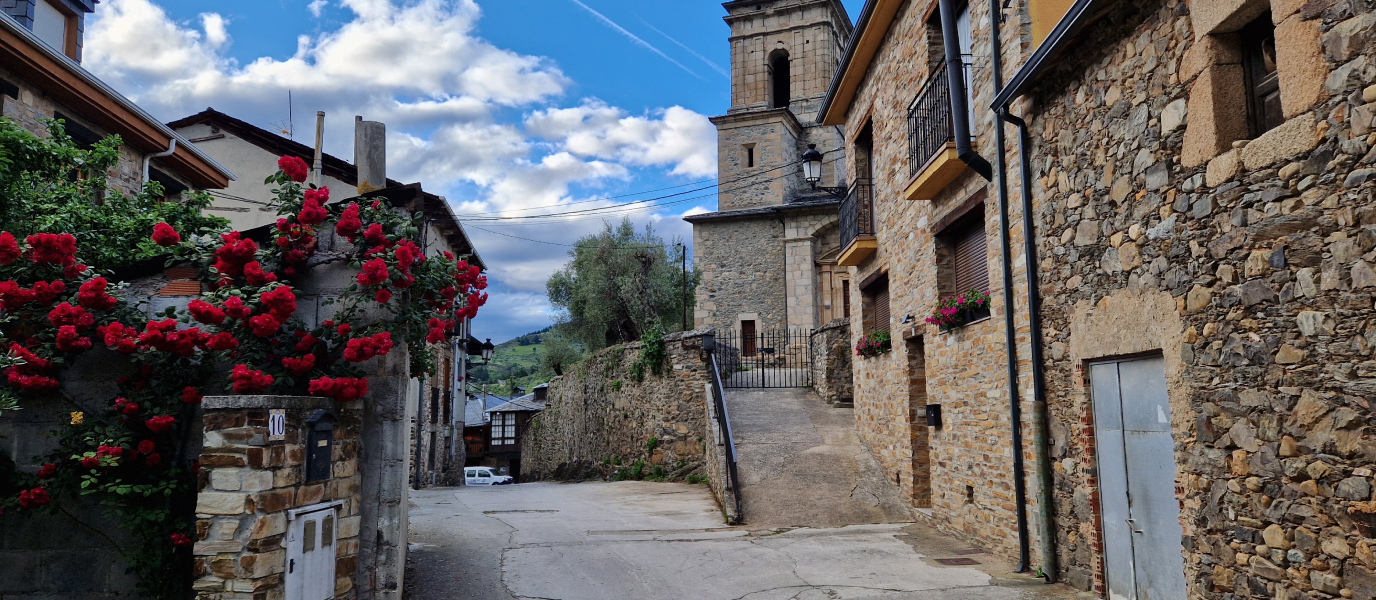Peñalba de Santiago is considered one of the most beautiful villages in Spain and is clearly a must when visiting the province of León. The preservation of its rural architecture and the spectacular surroundings make Peñalba a unique place.
In addition to learning about its history and architecture, you can make other plans thanks to the area surrounding Peñalba de Santiago such as hiking routes through the Valle del Silencio (Valley of Silence), a specific area in the Montes Aquilanos mountain range that surrounds the city of Ponferrada. Nevertheless, this village is one more jewel among the many beautiful villages that León has to offer.
This article provides an overview of the history of Peñalba de Santiago and tells you what is of interest in the village and what you can do in the area. Here we go!
- Historia de Peñalba de Santiago
- Que ver en Peñalba de Santiago
- Dónde comer en Peñalba de Santiago
- Rutas y visitas en los alrededores
- Dónde alojarse en la provincia de León
History of Peñalba de Santiago
According to the Spanish National Statistics Institute, Peñalba de Santiago had 15 inhabitants in the 2021 census. It has a very small population, like in so many villages in rural Spain. Nevertheless, by looking at Santiago de Peñalba church, you will realise that there have been many people there for many centuries. That temple was built in 937, more than 1,000 years ago!
Hermitages, cenobiums and small monasteries populated areas such as this one in the Montes Aquilanos area known as the Tebaida Berciana. Many hermits began to occupy the area in search of a retreat, something similar to what happened in the nearby Ribeira Sacra in Ourense.
One of those hermits was Fructuosus, Bishop of Braga, a Gothic nobleman of Bierzo origins who decided to retire there, to a cave, in the 7th century. Many of his contemporaries followed suit and El Bierzo began to be populated by cenobites, which led to the appearance of many monasteries such as Compludo (now disappeared), San Pedro de Montes and even on the Galician coast or in what is now Portugal.
Two centuries after Saint Fructuosus, Bishop Gennadius of Astorga (865-936) wanted to imitate him and repopulate the area, which was in decline after the Muslim conquest. He restored San Pedro de Montes and founded the monastery of Santiago de Peñalba, among others, of which today only the church remains, i.e. the origin of the present-day village of Peñalba de Santiago, an example of rural mountain architecture and witness to the origins of Christianity in Spain.
Like Saint Fructuosus, his follower Gennadius is known as Saint Gennadius, although he is not officially canonised and his name has been removed from the saints’ calendar.
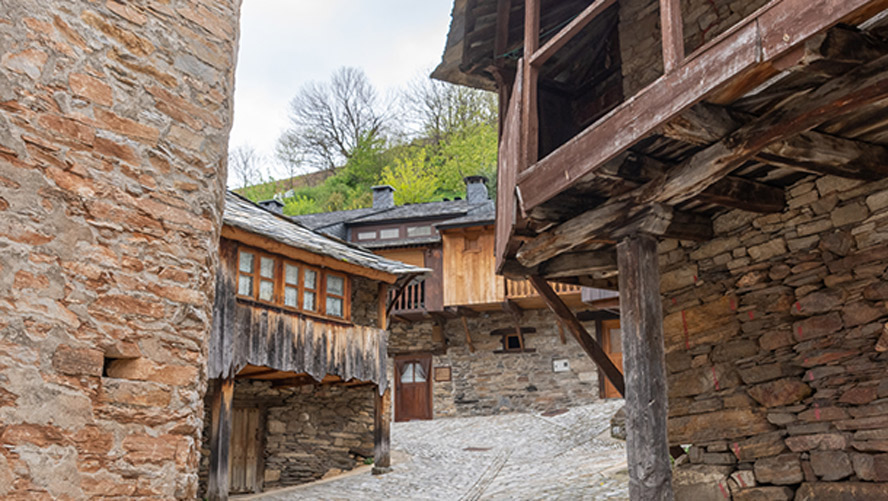
Things to see in Peñalba de Santiago
A village, a church and the landscape. Three elements make Peñalba de Santiago one of the most beautiful villages in the Castilla y León region and Spain, as well as a Historic-Artistic Site and a Cultural Heritage Site.
It is a tiny but charming village since it maintains and respects the rural architecture of the Bierzo region to perfection. The village centre, which is very compact around the church, has different construction periods ranging from the origin of the monastery to more modern times. The houses are made of slate and have two floors, separating the living quarters (upper floor) from the stables and cellars on the ground floor.
Santiago de Peñalba church
Santiago de Peñalba church is the epicentre of the village and the reason for its existence there, as we have already mentioned. It is a jewel of pre-Romanesque Mozarabic art built between 931 and 937, together with the now disappeared monastery. Today we can still admire the wall paintings and medieval graffiti that remain inside. On the outside, the horseshoe arches reveal the Mozarabic style.
Saint Gennadius cave and the Valley of Silence
The landscape around the Valley of Silence is a mountain valley surrounded by peaks that reach an altitude of 2,000 metres and hide the cave of Saint Gennadius, where the hermit retired in the 10th century. Several medieval caves like this one can be seen in the area.
The Valley of Silence lives up to its name. No wonder Fructuosus, Gennadius and so many others retired there. It is a true oasis of peace only dotted with tiny villages such as Peñalba de Santiago, Montes de Valdueza, San Clemente de Valdueza and Valdefrancos.
Strolling through Peñalba is being immersed in a unique medieval atmosphere.
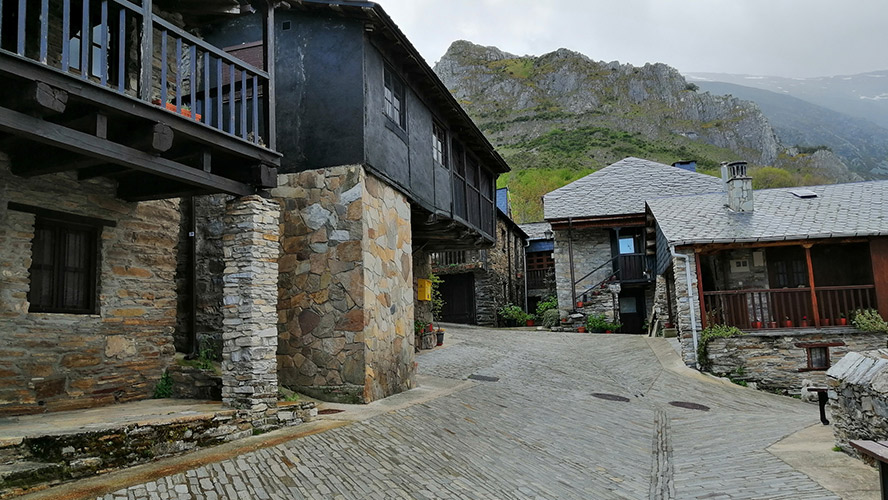
Things to see in Peñalba de Santiago
A village, a church and the landscape. Three elements make Peñalba de Santiago one of the most beautiful villages in the Castilla y León region and Spain, as well as a Historic-Artistic Site and a Cultural Heritage Site.
It is a tiny but charming village since it maintains and respects the rural architecture of the Bierzo region to perfection. The village centre, which is very compact around the church, has different construction periods ranging from the origin of the monastery to more modern times. The houses are made of slate and have two floors, separating the living quarters (upper floor) from the stables and cellars on the ground floor.
Santiago de Peñalba church
Santiago de Peñalba church is the epicentre of the village and the reason for its existence there, as we have already mentioned. It is a jewel of pre-Romanesque Mozarabic art built between 931 and 937, together with the now disappeared monastery. Today we can still admire the wall paintings and medieval graffiti that remain inside. On the outside, the horseshoe arches reveal the Mozarabic style.
Saint Gennadius cave and the Valley of Silence
The landscape around the Valley of Silence is a mountain valley surrounded by peaks that reach an altitude of 2,000 metres and hide the cave of Saint Gennadius, where the hermit retired in the 10th century. Several medieval caves like this one can be seen in the area.
The Valley of Silence lives up to its name. No wonder Fructuosus, Gennadius and so many others retired there. It is a true oasis of peace only dotted with tiny villages such as Peñalba de Santiago, Montes de Valdueza, San Clemente de Valdueza and Valdefrancos.
Strolling through Peñalba is being immersed in a unique medieval atmosphere.


























































